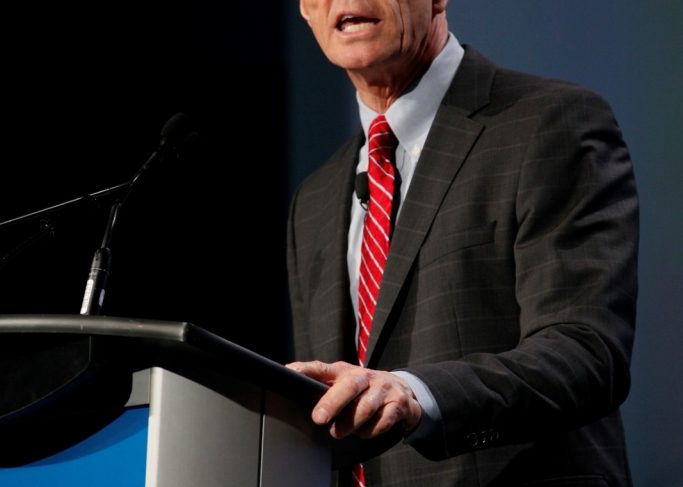
TORONTO – Machine to machine communications, the mobile wallet and mobile video (mmmm…) are the three most exciting opportunities on the immediate horizon for the Canadian wireless industry, but only if we get a few things done first, Rogers' communications division president Rob Bruce told the Canadian Telecom Summit this morning.
Bruce explained in his opening keynote how machine to machine (M2M) technology is transforming health care, security, government and energy, among other things. He predicted the Canadian M2M market would be providing $400 million in network revenue by 2015.
The mobile wallet, on the other hand, will alter the way Canadians transact with myriad businesses where credit cards, debit cards, driver’s licenses, transit passes and retailer loyalty cards are all stored on the smart phone’s SIM card. “It means no more bulky wallet weighing down your purse or your pocket,” he said, adding that Canadians collectively carry 675 million cards of one sort or another. “Cards that can be securely distributed and stored on SIM embedded in a smartphone,” for which “carriers will charge a modest rent to card issuers for this space,” so that “Canadians will have instant access to the cards that matter most… at no cost to them.”
The last “M” is mobile video, where Bruce noted Canadians want it all, all the time, no matter where they are and that “as players in the mobile video space, we should be aware that this is more of a sprint than a marathon – we must position ourselves for a wild ride.” He explained how video and audio streaming will comprise more than 60% of mobile data traffic by 2014.
(Ed note: However, many others believe that as long as wireless data rates remain in place for web access on the go, all that mobile video consumption will be done via WiFi and not over the cellular nets. In fact, both Shaw Communications in Canada and the U.S. cable industry as a whole are betting billions on it.)
However, in order to get to all this future mm-mm goodness, companies in the industry must cooperate among themselves – and with government. “It requires collaboration from a whole ecosystem of companies, non-governmental organizations and governments,” Bruce (right) said. “At Rogers, we’ve been executing a multi-year plan to evolve to an open, all IP standard. We need the industry to do the same.”
He identified carriers, application developers, manufacturers, financial institutions, regulators and content providers to all work together to make seamless communications happen – at a reasonable price. “We need content providers to digitize their content and make it available across all platforms at fair market value,” he added.

To help that along, we need the CRTC and the federal government to take a few issues by the horns. Bruce praised Industry Canada’s recent domestic roaming proposal (the other incumbents are not fans, however) that would allow all carriers to use the others’ networks for domestic roaming – at agreed on commercial rates. “It overcomes the economic hurdle of constructing infrastructure in less populated regions,” and “it fairly compensates companies who would roll up their sleeves and get these networks built.”
When it comes to the Commission, it has to roll up its sleeves and get going on a national consumer protection code for the telecom industry (the Regulator called for comments back in April). Right now, various provincial governments are drawing up their own patchwork of rules and regs governing wireless contracts and services, so the industry has been pestering the CRTC for a public proceeding to create a national standard. “Provincial consumer legislation just doesn’t make sense for national businesses,” said Bruce.
Expect the national wireless customer service standard to be a popular talking point at CTS this week.
Photo by Pinpoint National Photography



